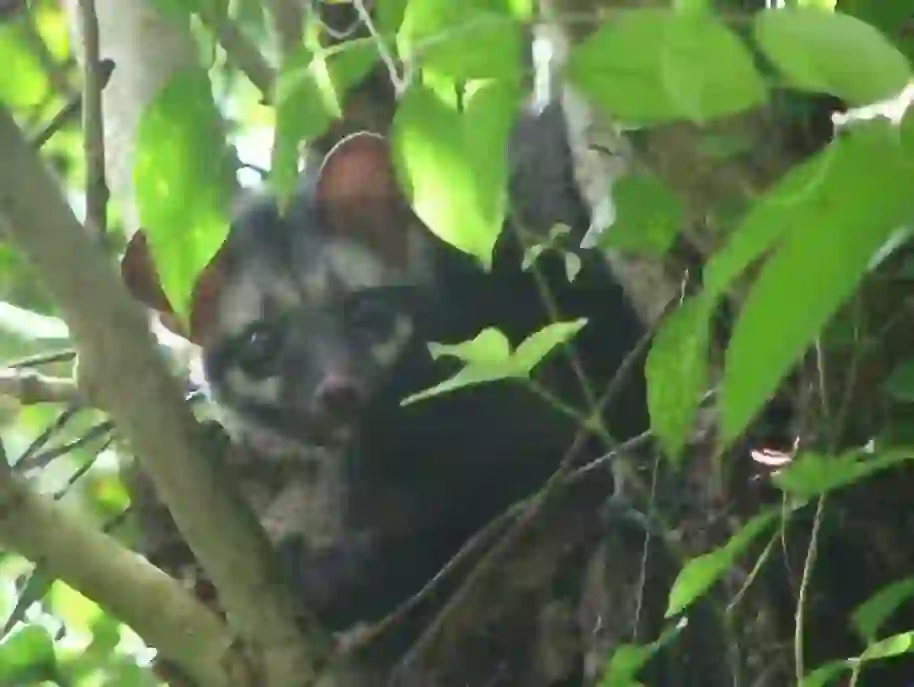
Civet
Civet
Civet
Are you familiar with the animal called 'Civet'? Despite having 'cat' in its name, it is not related to cats at all! Not only that, but civets also have deep connections with coffee and perfumes, which you might not imagine. Let's introduce the mysterious civet and explore its secrets!
Civet Basic Infomation
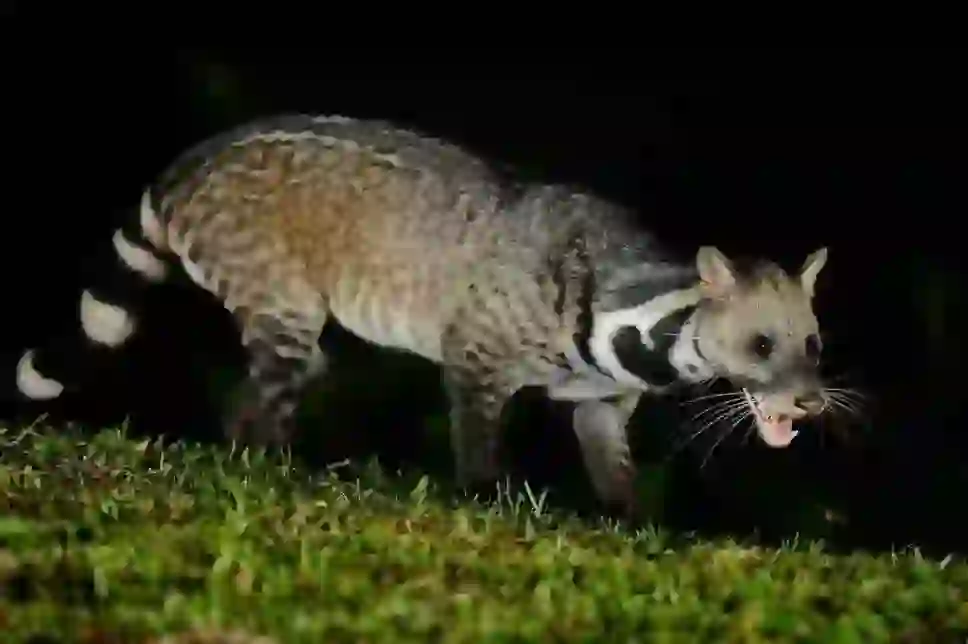
Phylum: Chordata, Subphylum: Vertebrata, Class: Mammalia, Order: Carnivora, Suborder: Feliformia, Family: Viverridae
Head-body length: 45-63 cm
Tail length: 30-40 cm
Weight: 2.7-3.6 kg
Civets belong to one of the largest families in the order Carnivora and are found across Africa, Eurasia, Indonesia, Sri Lanka, the Philippines, Taiwan, China, and India. In Japan, the species known as 'Hakubishin' or masked palm civet is native. Perhaps you have heard of it or even seen one.
Civets have elongated bodies and tails that are slightly shorter than their bodies, featuring very long tails.
The largest type of civet is the 'Giant Civet', with head-to-rump lengths of 83-90 cm, about twice the size of regular civets.
Many civets have scent glands near their anus, also known as anal glands, which produce a musky liquid used in perfumery.
Civet Q&A

What is the origin of the name 'Civet'?
Although 'cat' is part of its name, the civet is not actually related to cats. Have you ever heard of the scent 'musk' used in air fresheners, fabric softeners, and perfumes? Originally, 'musk' was known as 'civet', derived from a secretion produced by a different animal called the 'musk deer'. Civets produce a similar smelling secretion, which is why they were given this name. The 'cat' part of their name comes simply because they resembled cats.
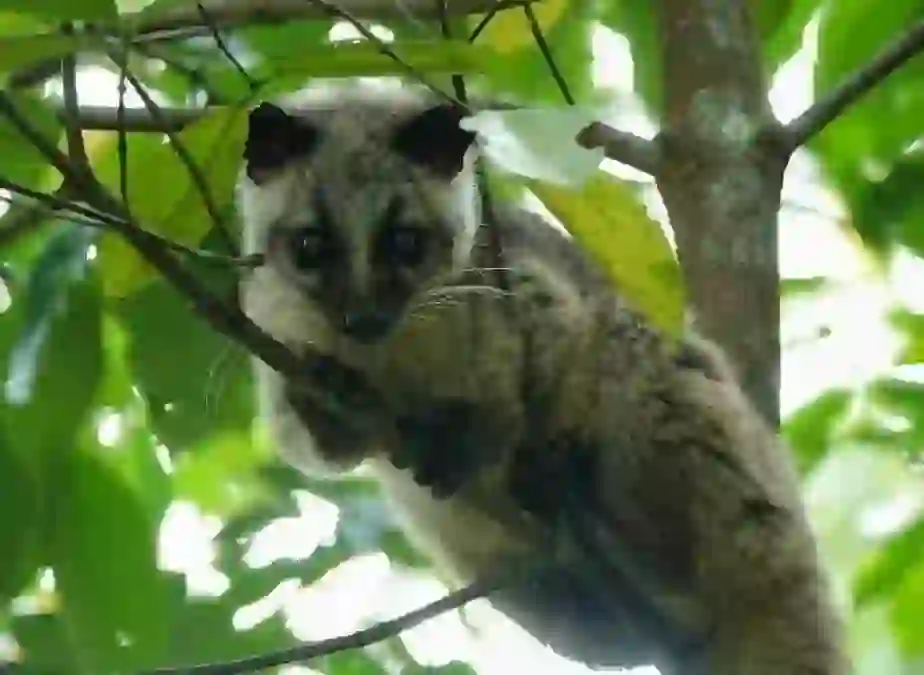
Why do civets live there?
Civets are mostly nocturnal and inhabit forests and grasslands. Depending on the species, some live on the ground, others in trees, some underground, and some near water bodies. Being nocturnal, they spend the day hidden under rocks or in the shadows of grass to avoid predators. They are typically solitary animals or may be seen with their offspring.
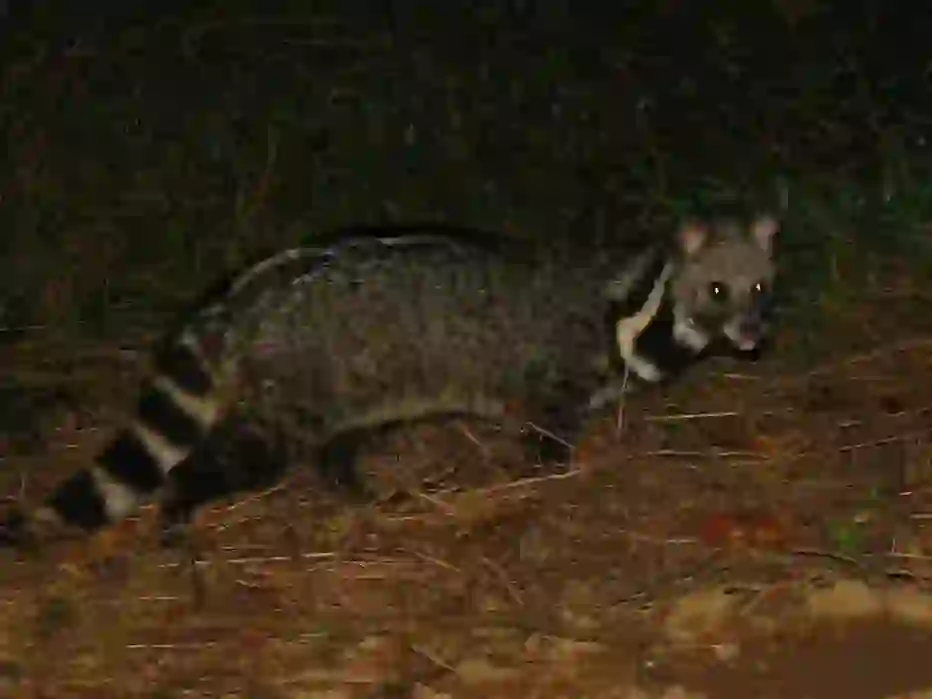
What does the Civet eat?
Civets are omnivores. Depending on the species, some prefer meat, eating small birds, rodents, and squirrels, while others favor fruits. Being omnivores, they do not exclusively eat meat or plants but maintain a balanced diet.
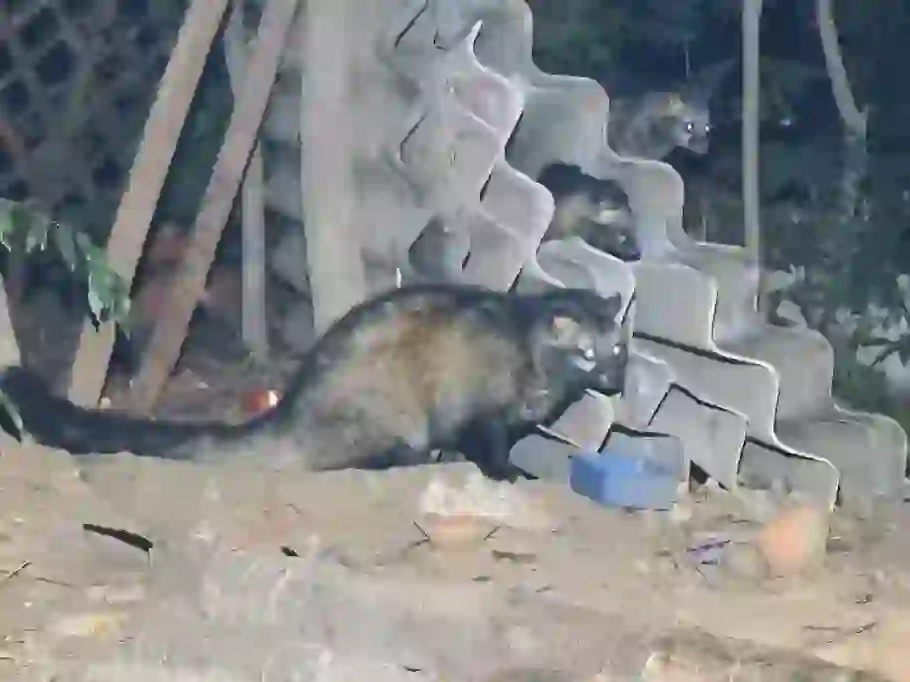
Is it true that civet secretions are used in perfumes?
Yes, the secretions from civet scent glands are used in perfumery. The primary role of these secretions is to enhance the durability of fragrances and improve other scents. While the undiluted secretion has a strong odor, when diluted, it transforms into a pleasant fragrance used in some perfumes. It's fascinating how a pleasant fragrance can be derived from such a source.
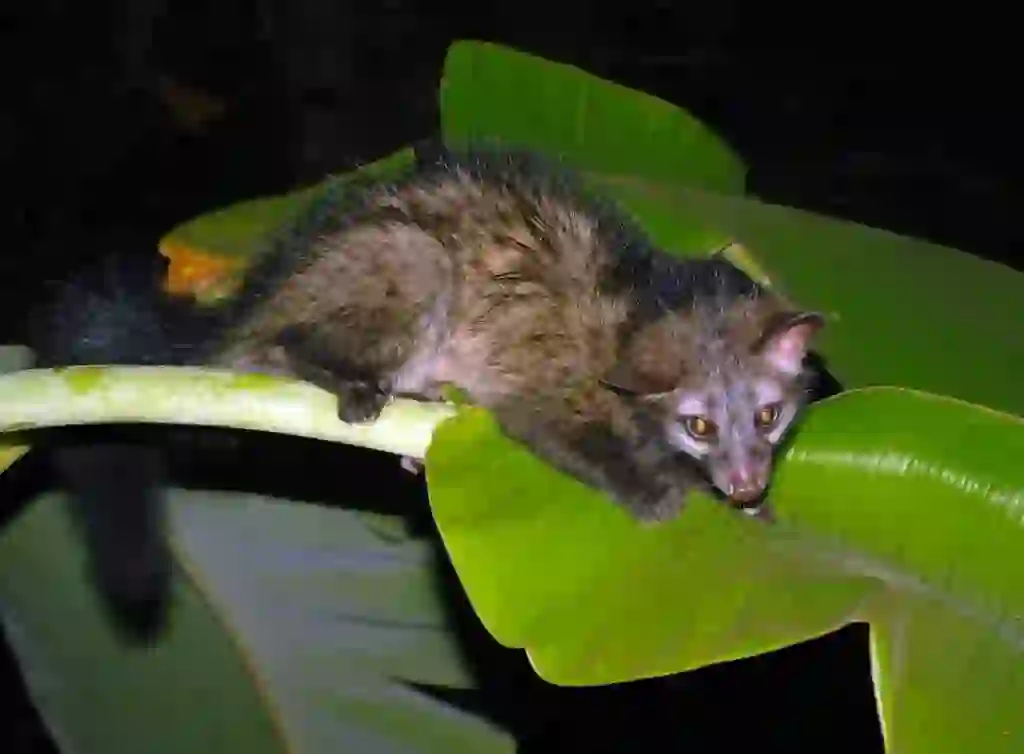
Is it true that civet feces are used to make coffee beans?
Have you heard of 'Kopi Luwak' coffee? Known as a luxurious coffee made from beans collected from civet feces. The civet consumes the coffee cherries but only digests the fruit, leaving the beans to pass through its digestive system, which can reduce the bitterness of the coffee and impart unique flavors.
This process does not involve the beans being directly in contact with feces, as they are encased in a layer that is not digested. Post-collection, the beans are thoroughly washed and processed. This unique method contributes to the high price and unique taste of Kopi Luwak.
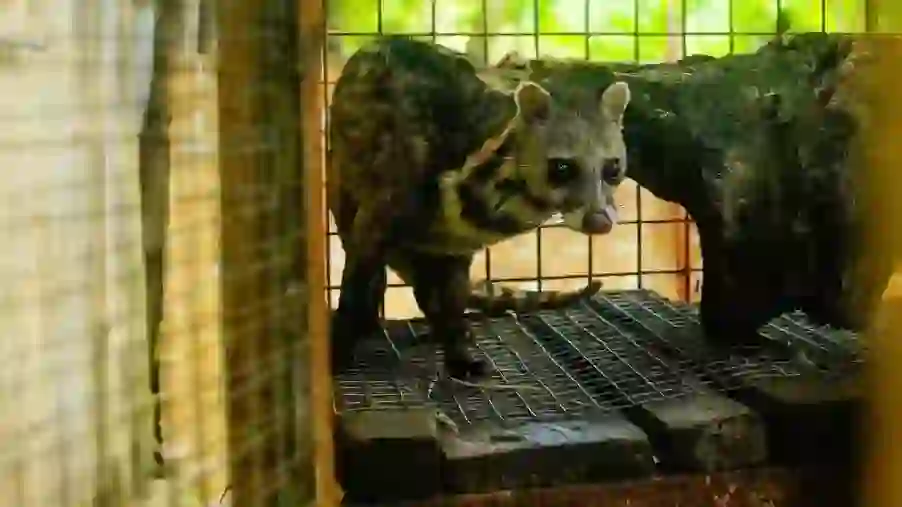
Is it true that civets are at risk of extinction?
Some civet species are indeed considered at risk of extinction due to habitat destruction and poaching for their meat, fur, and use in traditional medicine. Efforts are being made to protect these species through various conservation measures.

Would you like to become a part of the 'Animalbook.jp'?
Turn your knowledge into Q&A and share it with the world. ※Publication will be activated after purchase. Let's share information together!
Civet Type of List
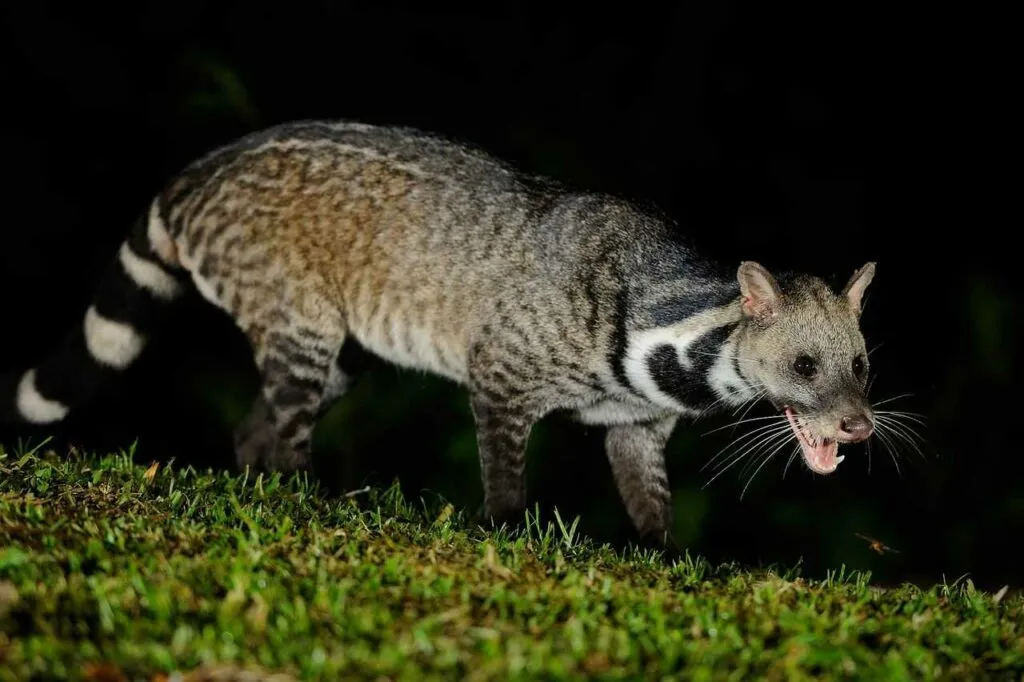
- African Civet
- Indian Brown Civet
- Burmese Civet
- Javan Civet
- Indian Civet
- Giant Civet
- Lesser Civet
- Abyssinian Genet
- Angolan Genet
- Bourlon Genet
- Crested Genet
- African Linsang
- European Genet
- Johnston’s Genet
- Large-spotted Genet
- Forest Genet
- Water Genet
- King Genet
- Servaline Genet
- Genet-like
- Cape Genet
- Giant Genet
- Rusty-spotted Genet
- African Palm Civet
- Binturong
- Small Indian Civet
- Celebes Palm Civet
- Masked Palm Civet
- Jardine’s Palm Civet
- Golden Palm Civet
- Austin’s Palm Civet
- Banded Palm Civet
- Black Hemigalus
- Tiger Civet
Information
Congratulations! You are the first commenter!

Create Your Favorite List!
Civet
Save the animals you love! Build your own list to quickly revisit your favorites later.

Would you like to leave a comment?
※Please note: This is for the purchase of rights to post comments within the article.
Find Your Favorites!
Our shop offers a unique and attractive selection of goods themed around various animals.
Civet References

- Wikipedia https://ja.wikipedia.org/wiki/ジャコウネコ科
- コトバンク https://kotobank.jp/word/ジャコウネコ-75905
- kodannsha Bluebacks https://gendai.ismedia.jp/articles/-/76436?page=5
- ニコニコ大百科 https://dic.nicovideo.jp/a/ジャコウネコ
- COFFEE TOWN コーヒータウン https://www.ejcra.org/column/ca_66.html
- Elephant Talk エレファント・トーク 動物コンサルタントユニット https://www.elephanttalk.jp/site/pet-column/1462.html
Civet Introduction of media used

出典:https://commons.wikimedia.org/wiki/File:Marapatti.jpg

出典:https://commons.wikimedia.org/wiki/File:Asian_Palm_Civet.jpg
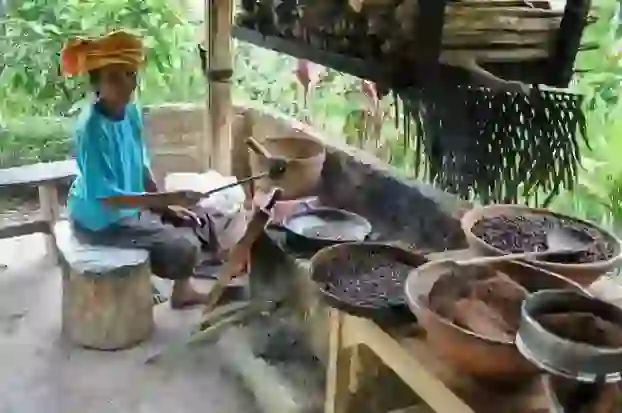
other
出典:https://commons.wikimedia.org/wiki/File:Roasting coffee – Satria coffee plantation (17058380675).jpg

出典:https://unsplash.com/photos/KwHRJOpMCbg

Help Enrich Our Animalbook.jp with Your Media!
We are constantly looking to expand and enrich our Animalbook.jp with amazing photos and videos of animals. If you have any media that you'd like to share, please contribute and help us showcase the beauty and diversity of the animal kingdom. Your submissions will be credited and featured in our encyclopedia, reaching a wide audience of animal lovers.
















